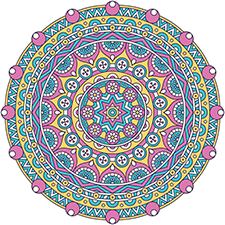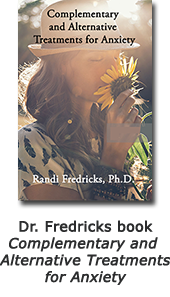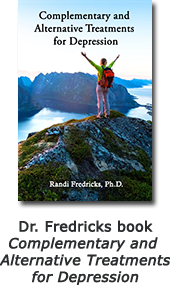Therapy for Psychiatric Disorders
San Jose Counseling and Psychotherapy
 Many people want to know; just what is therapy and how does it help people with mental health disorders. Sadly, these disorders are quite common in the United States and over 25 percent of Americans ages 18 and older suffer from a diagnosable mental health disorder during any given year.
Many people want to know; just what is therapy and how does it help people with mental health disorders. Sadly, these disorders are quite common in the United States and over 25 percent of Americans ages 18 and older suffer from a diagnosable mental health disorder during any given year.
While mental health disorders are widespread in the general population, the main burden of mental illness is concentrated in a much smaller proportion of around 6 percent of those who suffer from a mental illness serious enough to warrant therapy.
To put this in perspective, it is important to remember that mental illness is the leading cause of disability in the U.S. In the U.S., mental health disorders are diagnosed based on the Diagnostic and Statistical Manual of Mental Disorders, fifth edition (DSM-5). According to National Institute on Mental Health, the following are the most common mental health disorders in the U.S.
- Attention Deficit Hyperactivity Disorder (ADHD)
- Anxiety Disorders
- Autism Spectrum Disorder
- Bipolar Disorder
- Borderline Personality Disorder
- Antisocial Personality Disorder
- Avoidant Personality Disorder
- Major Depressive Disorder
- Dysthymia
- Eating Disorders
- Generalized Anxiety Disorder (GAD)
- Obsessive-Compulsive Disorder (OCD)
- Panic Disorder
- Post-Traumatic Stress Disorder
- Schizophrenia
- Social Phobia
- Agoraphobia
- Eating Disorders
- Substance Abuse Disorders
Of all the types of mental disorders, anxiety and mood disorders are the most common.
Anxiety Disorders and Mental Health
Anxiety disorders include panic disorder, obsessive-compulsive disorder, post-traumatic stress disorder, generalized anxiety disorder, and phobias, such as social phobia, agoraphobia, and specific phobias. Over 18 percent of U.S. adults ages 18 and older experience an anxiety disorder in a given year. Anxiety disorders frequently co-occur with depressive disorders or substance abuse disorders. Additionally, those with one anxiety disorder most often have another anxiety disorder. Almost 75 percent of people with an anxiety disorder have median age of onset of 21 years.
 When treating anxiety disorders, the most used approach is cognitive-behavioral therapy (CBT). Research has shown that CBT is highly effective in treating anxiety disorders. Psychotherapists use CBT to help people identify and learn to manage the factors that contribute to their anxiety.
When treating anxiety disorders, the most used approach is cognitive-behavioral therapy (CBT). Research has shown that CBT is highly effective in treating anxiety disorders. Psychotherapists use CBT to help people identify and learn to manage the factors that contribute to their anxiety.
Psychotherapists will use behavioral therapy involving techniques to reduce or stop the undesired behaviors associated with anxiety disorders. One often-used approach trains the patient in relaxation and deep breathing techniques to reduce agitation and rapid, shallow breathing that accompany certain anxiety disorders.
With CBT, the patient learns to understand how their thoughts contribute to the symptoms of anxiety disorders, and how to alter thought patterns to reduce the intensity of anxiety and the likelihood of re-occurrence. The person’s improved awareness combined with behavioral techniques can help the individual gradually confront and tolerate fearful situations. A usual course of CBT for depression lasts 16 to 20 sessions or less, depending on the severity of the anxiety.
Mood Disorders and Mental Health
Mood disorders include major depressive disorder, dysthymic disorder, and bipolar disorder. Nearly 10 percent of the U.S. population age 18 and older in a given year experience a mood disorder and the median age of onset is 30 years. Depressive disorders often co-occur with anxiety disorders and substance abuse disorders.
When treating depressive disorders with therapy, the most used approach to therapy is CBT and interpersonal therapy. CBT is based on the theory that depression is caused by certain patterns of thinking and behaviors. During CBT, the psychotherapist helps the patient recognize unhealthy thinking patterns and change them in a structured way, a process that is referred to as cognitive restructuring.
As with anxiety disorders, the psychotherapist may also teach relaxation techniques and other skills to help coping with negative feelings. An integral part of CBT is homework assignments, which are usually given at the end of each session. The purpose of the homework is to help increase a person’s activity levels, monitor thoughts and mood. As with anxiety disorders, the usual course of CBT for anxiety is 6 to 20 sessions or less, depending on the severity.
Interpersonal Therapy and Mental Health
Interpersonal Therapy (IPT) is an approach to therapy that asserts that individuals sometimes experience depression because of problems in their relationships. The goal of IPT is to help the patient identify and solve current interpersonal problems, such as relationships with family, friends and/or co-workers.
During IPT, the therapist help improve the patient’s communication and problem solving skills as well as the ability to appropriately respond to situations that tend to result in feelings of depression. By improving communication skills, conflict are resolved faster and relationships are improved. A usual course of IPT lasts 16 to 20 sessions. CBT is generally far more effective when combined with another type of therapy, such as IPT.

San Jose Therapy Services in the Silicon Valley serving San Jose, Los Gatos, Saratoga, Sunnyvale, Campbell, Cupertino, Los Altos, Mountain View, Palo Alto, Morgan Hill, and Santa Clara.





